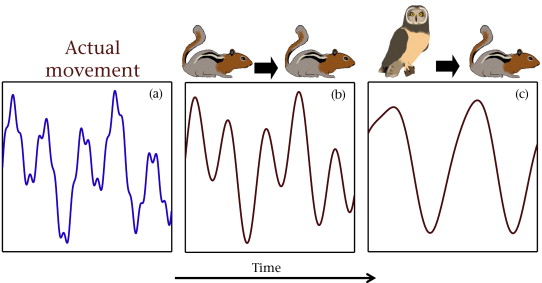An international collaboration led by scientists from Trinity College Dublin has shown that animals’ ability to perceive time is linked to their pace of life.
The study which was published in leading international journal Animal Behaviour, showed that small-bodied animals with fast metabolic rates perceive more information in a given unit of time than large-bodied animals with slow metabolic rates, and thus experience time at a slower rate. A fly can therefore avoid newspapers with ease and even humans can “quicken their eye” to observe the flight of a fast moving ball whilst competing in sports.
Assistant Professor at the School of Natural Sciences at Trinity College Dublin, Andrew Jackson commented that: “Ecology for an organism is all about finding a niche where you can succeed that no-one else can occupy… We are beginning to understand that there is a whole world of detail out there that only some animals can perceive and it’s fascinating to think of how they might perceive the world differently to us.”
Lead author Kevin Healy, who is a PhD student at the School of Natural Sciences, noted the significance of the findings in establishing that “the ability to perceive time on very small scales may be the difference between life and death for fast moving organisms.”
This ability of each species to perceive time can be measured using a phenomenon called the critical flicker fusion frequency. This is based on the maximum speed at which an individual can see flashing light before it is perceived as constant. It is the principle behind the illusion of television, computer and cinema screens. This explains why animals such as dogs see a flashing television screen where a human would see a natural flow of images.
The researchers use this phenomenon to explain the observed variation in time perception across a broad range of animals, showing that animals that are generally expected to be agile possess the most advanced ability to see time at high resolutions.
A collaborating scientist on the research project, Professor Graeme Ruxton of the University of St Andrews in Scotland, said: “Having eyes that send updates to the brain at much higher frequencies than our eyes do is of no value if the brain cannot process that information equally quickly. Hence, this work highlights the impressive capabilities of even the smallest animal brains. Flies might not be deep thinkers but they can make good decisions very quickly.”
Dr. Luke McNally from the University of Edinburgh adds: “Animals may also use variation in time perception to send covert signals; for example, many species using flashing lights as signals, such as fireflies and many deep-sea animals. Larger and slower predator species may not be able to decode these signals if their visual system isn’t fast enough, giving the signallers a secret channel of communication.”







